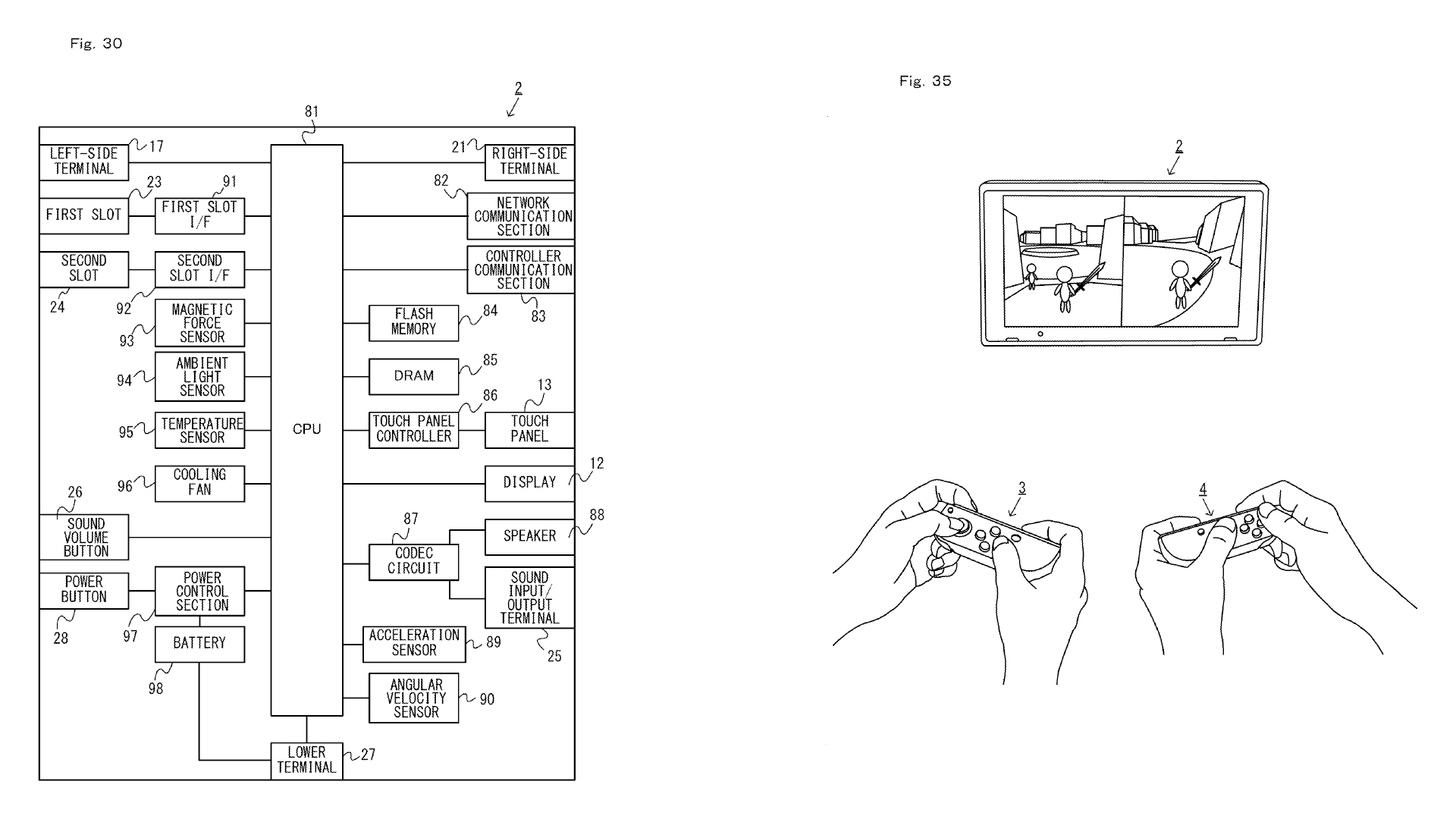SpokenTruth said:
Good luck GameVice.
Credit goes to Rösti for compiling.
http://www.neogaf.com/forum/showthread.php?t=1325344

*Architecture=System floor plan (limited)
On June 10, 2016, Nintendo Co., Ltd. filed in the US via the United States Patent and Trademark Office several patent applications related to Nintendo Switch. They were published today December 15, 2016. The applications are:
Appl. No. 15/178972, GAME CONTROLLER
Appl. No. 15/178991, GAME CONTROLLER
Appl. No. 15/179011, GAME CONTROLLER
Appl. No. 15/178984, SUPPORTING DEVICE, CHARGING DEVICE AND CONTROLLER SYSTEM
Appl. No. 15/179022, INFORMATION PROCESSING SYSTEM, INFORMATION PROCESSING DEVICE, CONTROLLER DEVICE AND ACCESSORY
Inventors: IWAO; Toshiaki; (Kyoto, JP) ; TAKEI; Masaya; (Kyoto, JP) ; FUJITA; Kumpei; (Kyoto, JP) ; IKUTA; Hiroki; (Kyoto, JP) ; HIROSE; Shinji; (Kyoto, JP) ; AKAMA; Tetsuya; (Kyoto, JP) ; TSUCHIYA; Hitoshi; (Kyoto, JP)
Applicant: NINTENDO CO., LTD.
Kyoto
JP
Family ID: 1000002022311
Appl. No.: 15/178984
Filed: June 10, 2016 |
Claims
1. A game controller supporting device for supporting a first game controller and a second game controller, wherein: the first game controller includes a first rail member configured for allowing the first game controller to be attached to the supporting device; the second game controller includes a second rail member configured for allowing the second game controller to be attached to the supporting device; the supporting device includes: a support section; and a main section connected to the support section; the support section includes: a first slide member in an area of the support section toward a first side in a predetermined direction, the first slide member being configured to slidably engage with the first rail member of the first game controller in a first slide direction; and a second slide member in an area of the support section toward a second side in the predetermined direction, the second slide member being configured to slidably engage with the second rail member of the second game controller in a second slide direction; the first slide member includes: a first groove having a bottom surface formed along the first slide direction; a first facing surface, wherein the first slide member has a first side and a second side in the first slide direction, and the first facing surface is in an end portion on the first side of the first slide member so as to face a portion of the bottom surface of the first groove; and a first terminal on the first facing surface, which first terminal is configured to be electrically connected to the first game controller; the second slide member includes: a second groove having a bottom surface formed along the second slide direction; a second facing surface, wherein the second slide member has a first side and a second side in the second slide direction, and the second facing surface is in an end portion on the first side of the second slide member so as to face a portion of the bottom surface of the second groove; and a second terminal on the second facing surface, which second terminal is configured to be electrically connected to the second game controller; the main section includes: a first grip portion on a first side of the main section in the predetermined direction configured for being gripped by a user; and a second grip portion on a second side of the main section in the predetermined direction configured for being gripped by the user; the support section includes: a connector; a power supply configured to supply power, via the connector, to the first game controller via the first terminal, and to the second game controller via the second terminal; and a light-emitter configured for emitting light indicating that the power supply is supplying power to at least one of the first game controller and the second game controller; the first game controller includes a first stop member, wherein the first stop member is configured so that when the first rail member has been inserted up to a predetermined first position into the first slide member, the first stop member resists a slide movement, in an opposite direction, of the first rail member against the first slide member, the opposite direction being a direction opposite to a direction in which the first slide member is insertable into the first rail member; the first slide member includes a first stop-receiving portion, wherein the first stop member is further configured so that when the first rail member of the first game controller has been inserted up to the first position into the first slide member, the first stop member engages with the first stop-receiving portion; the second game controller includes a second stop member, wherein the second stop member is configured so that when the second rail member has been inserted up to a predetermined second position into the second slide member, the second stop member resists a slide movement, in an opposite direction, of the second rail member against the second slide member, the opposite direction being a direction opposite to a direction in which the second slide member is insertable into the first rail member; and the second slide member includes a second stop-receiving portion, wherein the second stop member is further configured so that when the second rail member of the second game controller has been inserted up to the second position into the second slide member, the second stop member engages with the second stop-receiving portion. |
BACKGROUND AND SUMMARY
/snip |
/snip
DETAILED DESCRIPTION OF NON-LIMITING EXAMPLE EMBODIMENTS
/snip |
Source: Search "15/178984" at http://appft.uspto.gov/netahtml/PTO/search-bool.html
|

















